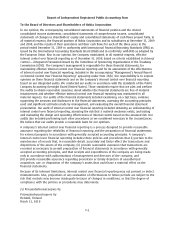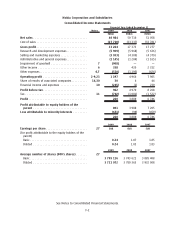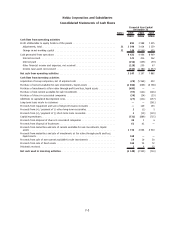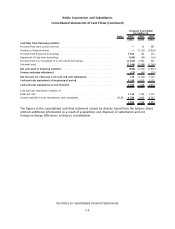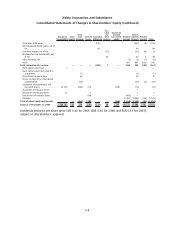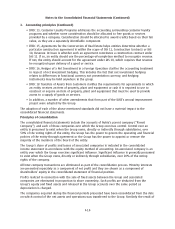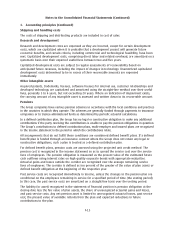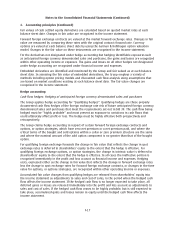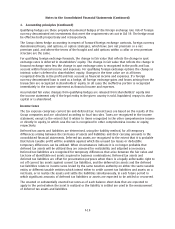Nokia 2009 Annual Report Download - page 183
Download and view the complete annual report
Please find page 183 of the 2009 Nokia annual report below. You can navigate through the pages in the report by either clicking on the pages listed below, or by using the keyword search tool below to find specific information within the annual report.Notes to the Consolidated Financial Statements
1. Accounting principles
Basis of presentation
The consolidated financial statements of Nokia Corporation (“Nokia” or “the Group”), a Finnish public
limited liability company with domicile in Helsinki, in the Republic of Finland, are prepared in
accordance with International Financial Reporting Standards as issued by the International Accounting
Standards Board (“IASB”) and in conformity with IFRS as adopted by the European Union (“IFRS”). The
consolidated financial statements are presented in millions of euros (“EURm”), except as noted, and
are prepared under the historical cost convention, except as disclosed in the accounting policies
below. The notes to the consolidated financial statements also conform to Finnish Accounting
legislation. On March 11, 2010, Nokia’s Board of Directors authorized the financial statements for
2009 for issuance and filing.
The Group completed the acquisition of all of the outstanding equity of NAVTEQ on July 10, 2008 and
a transaction to form Nokia Siemens Networks on April 1, 2007. The NAVTEQ and the Nokia Siemens
Networks business combinations have had a material impact on the consolidated financial statements
and associated notes. See Note 8.
Adoption of pronouncements under IFRS
In the current year, the Group has adopted all of the new and revised standards, amendments and
interpretations to existing standards issued by the IASB that are relevant to its operations and
effective for accounting periods commencing on or after January 1, 2009.
• IAS 1 (Revised), Presentation of financial statements, prompts entities to aggregate
information in the financial statements on the basis of shared characteristics. All nonowner
changes in equity (i.e. comprehensive income) should be presented either in one statement of
comprehensive income or in a separate income statement and statement of comprehensive
income.
• Amendments to IFRS 7 require entities to provide additional disclosures about the fair value
measurements. The amendments clarify the existing requirements for the disclosure of
liquidity risk.
• Amendment to IFRS 2, Sharebased payment, Group and Treasury Share Transactions, clarifies
the definition of different vesting conditions, treatment of all nonvesting conditions and
provides further guidance on the accounting treatment of cancellations by parties other than
the entity.
• Amendment to IAS 20, Accounting for government grants and disclosure of government
assistance, requires that the benefit of a belowmarket rate government loan is measured as
the difference between the carrying amount in accordance with IAS 39 and the proceeds
received, with the benefit accounted for in accordance with IAS 20.
• Amendment to IAS 23, Borrowing costs, changes the treatment of borrowing costs that are
directly attributable to an acquisition, construction or production of a qualifying asset. These
costs will consequently form part of the cost of that asset. Other borrowing costs are
recognized as an expense.
• Under the amended IAS 32 Financial Instruments: Presentation, the Group must classify
puttable financial instruments or instruments or components thereof that impose an obligation
to deliver to another party, a prorata share of net assets of the entity only on liquidation, as
equity. Previously, these instruments would have been classified as financial liabilities.
• Amendments to IFRIC 9 and IAS 39 clarify the accounting treatment of embedded derivatives
when reclassifying financial instruments.
F9




